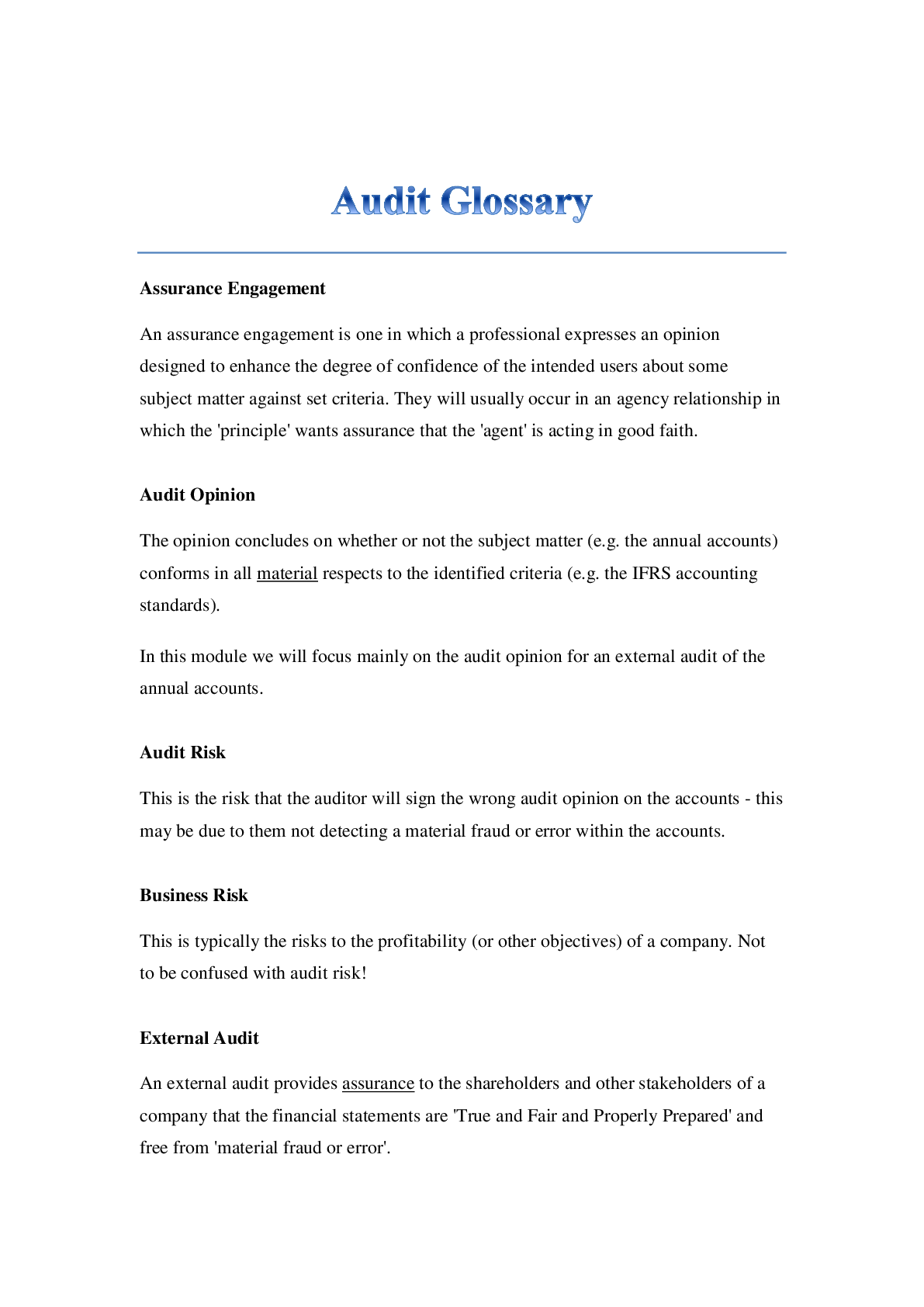Financial Accounting > Manual > Audit Glossary: All the Words and Phrases Defined/Explained (All)
Audit Glossary Assurance Engagement Audit Opinion Audit Risk Business Risk External Audit Financial Statement Assertions Going Concern Internal Audit Pervasive Agreed-upon pr ... ocedures engagement—An engagement in which an auditor is Analytical procedures—Evaluations of financial information made by a study of Annual report—. Appropriateness— Assertions— Assurance engagement—An engagement in which a practitioner expresses a Assurance engagement risk— Audit documentation— Audit evidence— Audit of financial statements— Audit plan— Audit risk— Control risk— Inherent risk— Audit sampling— Control environment— Engagement letter— Entity’s risk assessment process— Error— Fair value— Fraud— Fraudulent financial reporting— General IT-controls— Going concern assumption— Governance— Independence—Comprises: (a) Independence of mind— (b) Independence in appearance— Information system relevant to financial reporting— Initial audit engagement— Internal control— (a) The control environment; (b) The entity’s risk assessment process; (c) The information system, including the related business processes, relevant to financial reporting, and communication; (d) Control activities; and (e) Monitoring of controls. Listed entity — Management representations— Materiality— Misappropriation of assets— Misstatement— Monitoring of controls— Opinion— Overall audit strategy— Planning— Reperformance— Review engagement— Review procedures— Risk assessment procedures— Subsequent events— (a) Those that provide further evidence of conditions that existed at period end; and, (b) Those that are indicative of conditions that arose subsequent to period end. Substantive procedures— (a) Tests of details of classes of transactions, account balances; and disclosures and, (b) Substantive analytical procedures. Tests of control— Understanding of the entity and its environment— (a) Industry, regulatory, and other external factors, including the applicable financial reporting framework. (b) Nature of the entity, including the entity’s selection and application of accounting policies. (c) Objectives and strategies and the related business risks that may result in a material misstatement of the financial statements. (d) Measurement and review of the entity’s financial performance. (e) Internal control. [Show More]
Last updated: 3 years ago
Preview 1 out of 10 pages

Buy this document to get the full access instantly
Instant Download Access after purchase
Buy NowInstant download
We Accept:

Can't find what you want? Try our AI powered Search
Connected school, study & course
About the document
Uploaded On
Apr 12, 2020
Number of pages
10
Written in
All
This document has been written for:
Uploaded
Apr 12, 2020
Downloads
0
Views
226
Scholarfriends.com Online Platform by Browsegrades Inc. 651N South Broad St, Middletown DE. United States.
We're available through e-mail, Twitter, Facebook, and live chat.
FAQ
Questions? Leave a message!
Copyright © Scholarfriends · High quality services·